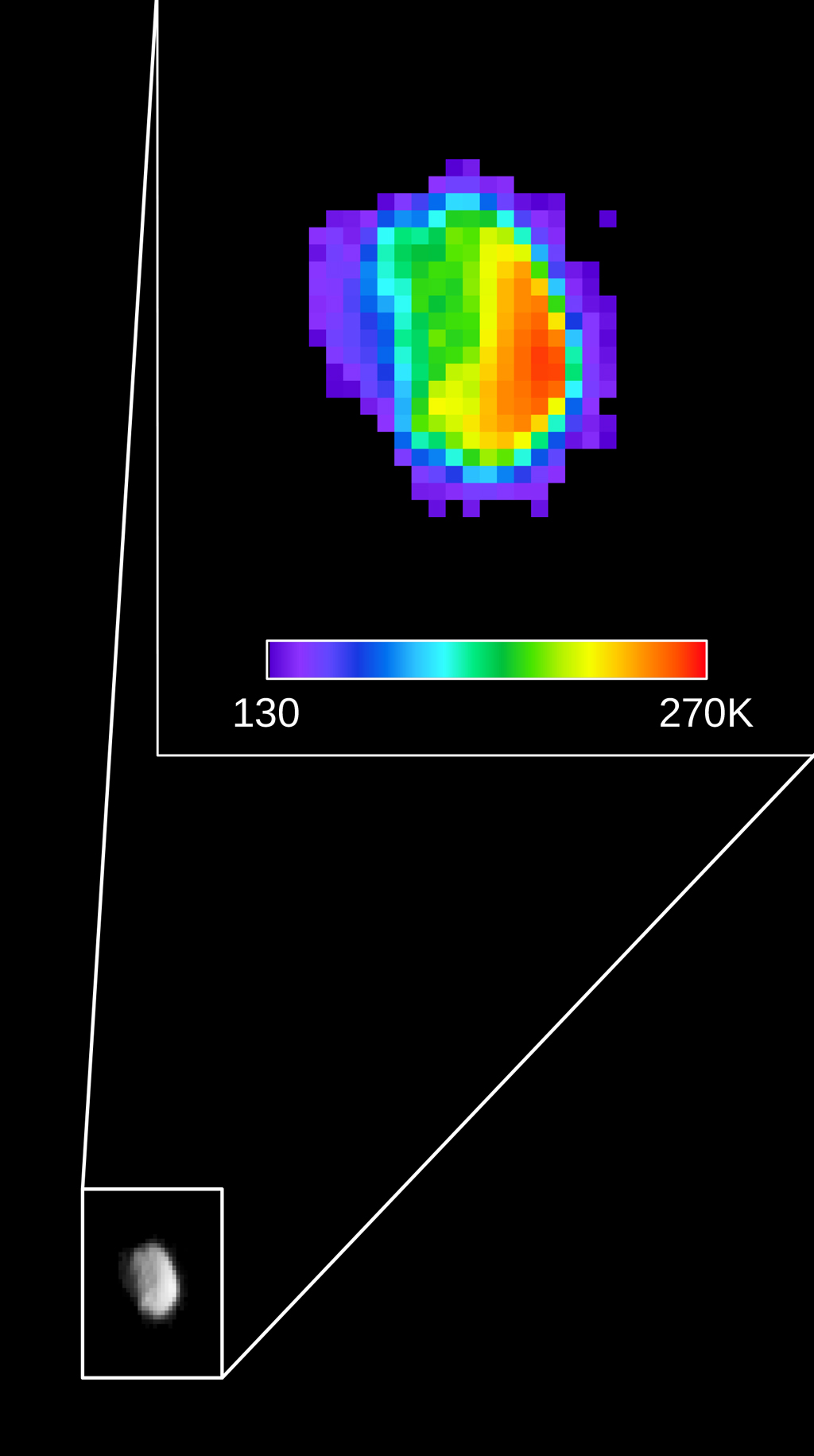NASA's Mars Odyssey Snaps Its First Images of Moon Phobos

After 16 years of orbiting the Red Planet, NASA's record-breaking Mars Odyssey spacecraft has captured its first photos of the Martian moon Phobos.
Mars Odyssey launched in 2001 and is the oldest operational spacecraft at the Red Planet. Since it arrived at Mars, the spacecraft has only looked down at the Martian surface and hasn't been pointing its cameras up at Mars' moons. But on Sept. 29, Mars Odyssey snapped its first-ever images of the potato-shaped moon Phobos.
The spacecraft's Thermal Emission Imaging System (THEMIS) camera has helped researchers study the composition of Mars by providing both visible-light and infrared images of the planet's surface. Now that Mars Odyssey has shown that it is capable of imaging moons as well, the mission can begin to do the same types of observations of both Martian moons, Phobos and Deimos. [Moons of Mars: Amazing Photos of Phobos and Deimos]

"We now have the capability of rotating the spacecraft for THEMIS observations," Jeffrey Plaut, Mars Odyssey project scientist, said in a statement. "There is heightened interest in Phobos because of the possibility that future astronauts could perhaps use it as an outpost" for missions to Mars, he added.
While other spacecraft on and around Mars have photographed Phobos in the past, this is the first time that any spacecraft has captured infrared images of the moon.
By using THEMIS to look at Phobos, NASA scientists can see how the temperature changes across the moon's surface, especially when the sun rises and sets on the moon. "Part of the observed face of Phobos was in pre-dawn darkness, part in morning daylight," Victoria Hamilton, THEMIS Deputy Principal Investigator, said in the statement.
The infrared view of Phobos during sunrise "provides information about how quickly the ground warms, which is related to the texture of the surface," NASA officials said. "As barefoot beach walks can confirm, sand warms or cools quicker than rocks or pavement."
Get the Space.com Newsletter
Breaking space news, the latest updates on rocket launches, skywatching events and more!
"Including a predawn area in the observation is useful because all the heating from the previous day's sunshine has reached its minimum there," Hamilton said. "As you go from predawn area to morning area you get to watch the heating behavior. If it heats up very quickly, it's likely not very rocky but dusty instead."

Scientists believe Phobos is made of material similar to Type I or II carbonaceous chondrites, the stuff that makes up asteroids in the solar system. Its rocky interior is more like a pile of gravitationally bound rubble than a solid rock, and the surface is covered in about 3 feet (1 meter) of dusty powder – which scientists suspect is the result of meteorite impacts. The Martian moon is also covered in craters and strange grooves that may have come from those impacts.
With new thermal imagery of Phobos, scientists can figure out the mineral composition of Phobos and learn details about the texture of its surface, NASA officials said. And now that the team has demonstrated that Mars Odyssey can safely rotate to observe Mars' moons, they're planning a whole series of observations of both Phobos and Deimos.
"We want to get observations under all types of lighting — fully daylit, a small crescent, during eclipse," Hamilton said. "We hope this is the first of several observations that will help us understand Phobos and Deimos."
Email Hanneke Weitering at hweitering@space.com or follow her @hannekescience. Follow us @Spacedotcom, Facebook and Google+. Original article on Space.com.
Join our Space Forums to keep talking space on the latest missions, night sky and more! And if you have a news tip, correction or comment, let us know at: community@space.com.

Hanneke Weitering is a multimedia journalist in the Pacific Northwest reporting on the future of aviation at FutureFlight.aero and Aviation International News and was previously the Editor for Spaceflight and Astronomy news here at Space.com. As an editor with over 10 years of experience in science journalism she has previously written for Scholastic Classroom Magazines, MedPage Today and The Joint Institute for Computational Sciences at Oak Ridge National Laboratory. After studying physics at the University of Tennessee in her hometown of Knoxville, she earned her graduate degree in Science, Health and Environmental Reporting (SHERP) from New York University. Hanneke joined the Space.com team in 2016 as a staff writer and producer, covering topics including spaceflight and astronomy. She currently lives in Seattle, home of the Space Needle, with her cat and two snakes. In her spare time, Hanneke enjoys exploring the Rocky Mountains, basking in nature and looking for dark skies to gaze at the cosmos.









